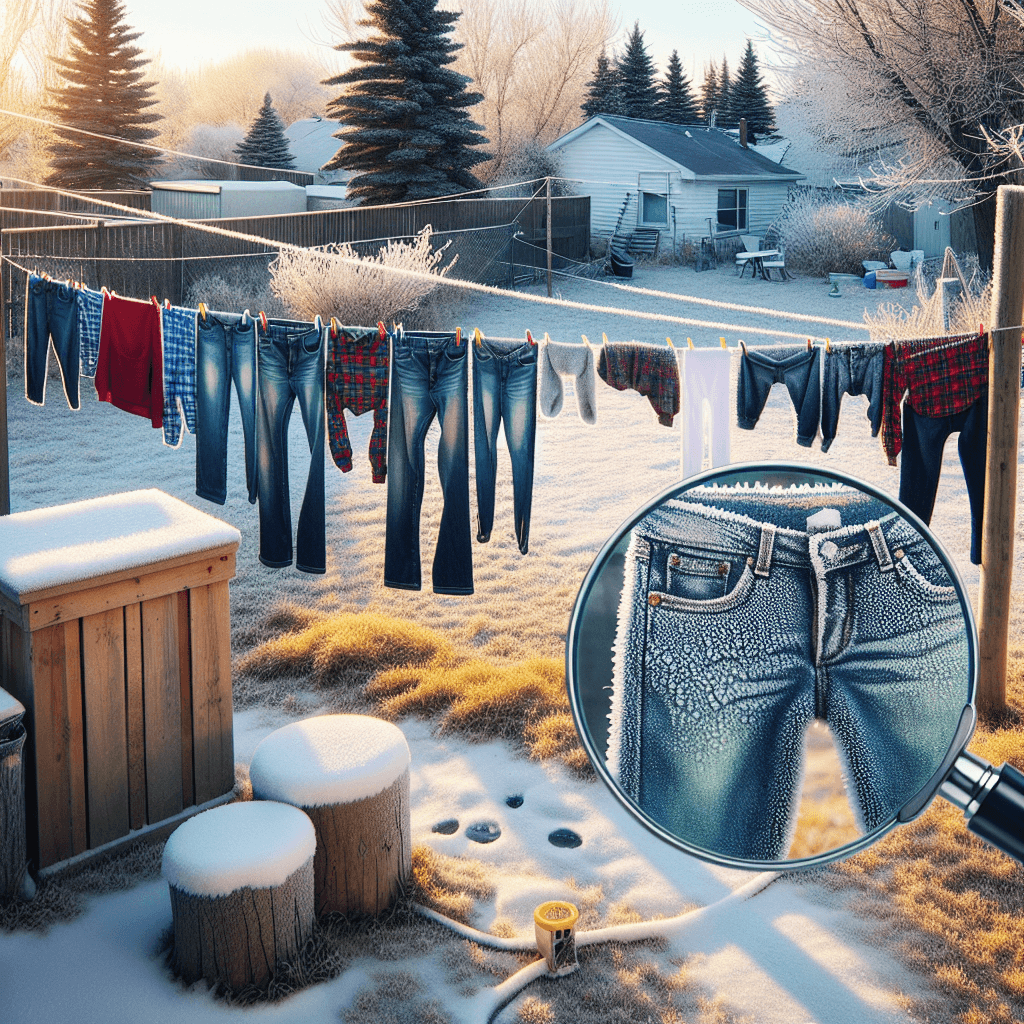How can wet laundry freeze solid on a line and still become dry
It's a bizarre winter paradox: laundry can freeze into a solid block of ice on the line, yet still become perfectly dry. Discover the fascinating science that allows ice to simply vanish into thin air, no melting required.


Too Long; Didn't Read
TLDR: The frozen water in your clothes doesn't melt; it turns directly into a gas through a process called sublimation, leaving the fabric dry even in freezing temperatures.
Frozen Stiff to Perfectly Dry: The Science of How Wet Laundry Can Freeze Solid on a Line and Still Become Dry
Have you ever seen a pair of jeans standing upright on a clothesline, frozen stiff in the biting winter air, and wondered how on earth they could ever get dry? It seems counterintuitive. We associate drying with warmth and evaporation, not with ice and freezing temperatures. Yet, for generations, people in cold climates have successfully dried their laundry outdoors in the dead of winter. This isn't just an old wives' tale; it's a fascinating display of physics at work in your own backyard. This post will unravel the scientific process behind this winter wonder, explaining exactly how frozen water can seemingly vanish from fabric, leaving it crisp and dry.
It’s Not Magic, It’s Sublimation
The secret behind this seemingly impossible feat lies in a scientific process called sublimation. We typically learn that water has three states: solid (ice), liquid (water), and gas (water vapor). We also learn that to get from ice to vapor, you must first melt the ice into liquid water and then heat the water until it evaporates.
Sublimation is the special process that allows a substance to skip the liquid phase entirely, transitioning directly from a solid to a gas.
The most common example of sublimation is dry ice. A block of solid carbon dioxide doesn't melt into a puddle; instead, it releases clouds of vapor as it turns directly into a gas. The exact same principle applies to the ice crystals trapped in the fibers of your frozen laundry. The water doesn't need to melt to escape.
A Step-by-Step Guide to Freeze-Drying Your Laundry
For sublimation to work its magic on your clothesline, a specific set of conditions must be met. The process happens in a few key stages.
- The Big Freeze: First, when you hang your wet laundry out in below-freezing temperatures, the water within the fabric freezes into tiny, solid ice crystals. This is what makes the clothes stiff and able to hold their shape, like a cardboard cutout of a t-shirt.
- The Vanishing Act: This is where sublimation takes over. For the solid ice to turn into a gas, the individual water molecules need a little bit of energy to break free from their rigid, crystalline structure. This energy can come from the sun's radiation—even on a cold, cloudy day, there's enough ambient energy to kickstart the process.
- The Role of Dry Air and Wind: The final, crucial ingredient is dry air. Cold winter air typically has very low humidity, meaning it isn’t holding much water vapor. This creates a steep concentration gradient between the "wet" surface of the ice crystals and the "dry" surrounding air. The newly liberated water vapor molecules are quickly whisked away from the fabric, especially if there's a breeze. This wind action prevents the air around the clothes from becoming saturated, allowing more ice to sublimate continuously.
Slowly but surely, molecule by molecule, the ice crystals disappear from your clothes, leaving the fabric dry without it ever feeling damp.
Creating the Ideal Freeze-Drying Environment
While this process will happen in most freezing conditions, it works best under an ideal combination of factors. If you want to try freeze-drying your laundry, look for a day with:
- Below-Freezing Temperatures: The water must remain solid for sublimation to occur.
- Low Humidity: The drier the air, the more readily it will absorb the water vapor.
- Sunlight: Direct sun provides a powerful energy source to speed up the process significantly.
- A Gentle Breeze: Wind is your best friend, as it constantly removes the water vapor from the vicinity of the clothes, driving the process forward.
The process is slow—it can take a full day or even longer—but it's an incredibly effective and energy-free method. When you bring the clothes in, they may still feel stiff, but a quick shake or a few minutes at room temperature will soften them up, revealing perfectly dry laundry.
Conclusion
The mystery of how wet laundry can freeze solid on a line and still become dry is a perfect example of the remarkable science hidden in our daily lives. It isn't a magical disappearance but the elegant process of sublimation, where solid ice transitions directly into a gas. By leveraging the power of low humidity, solar energy, and a steady breeze, nature provides an energy-efficient alternative to the clothes dryer. So, the next time you see a row of frozen-stiff garments on a clothesline, you’ll know you're not just looking at laundry—you're witnessing a fascinating scientific phenomenon in action.


